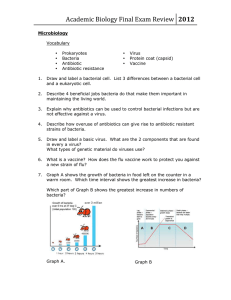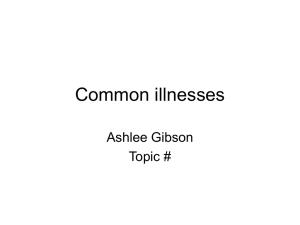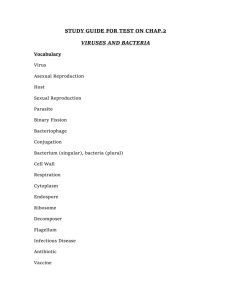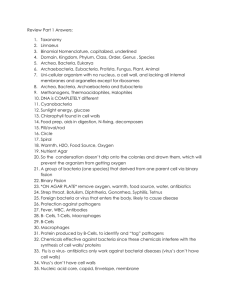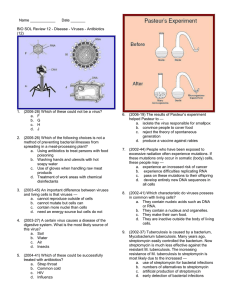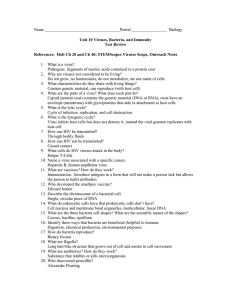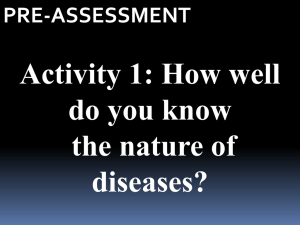Questions
advertisement
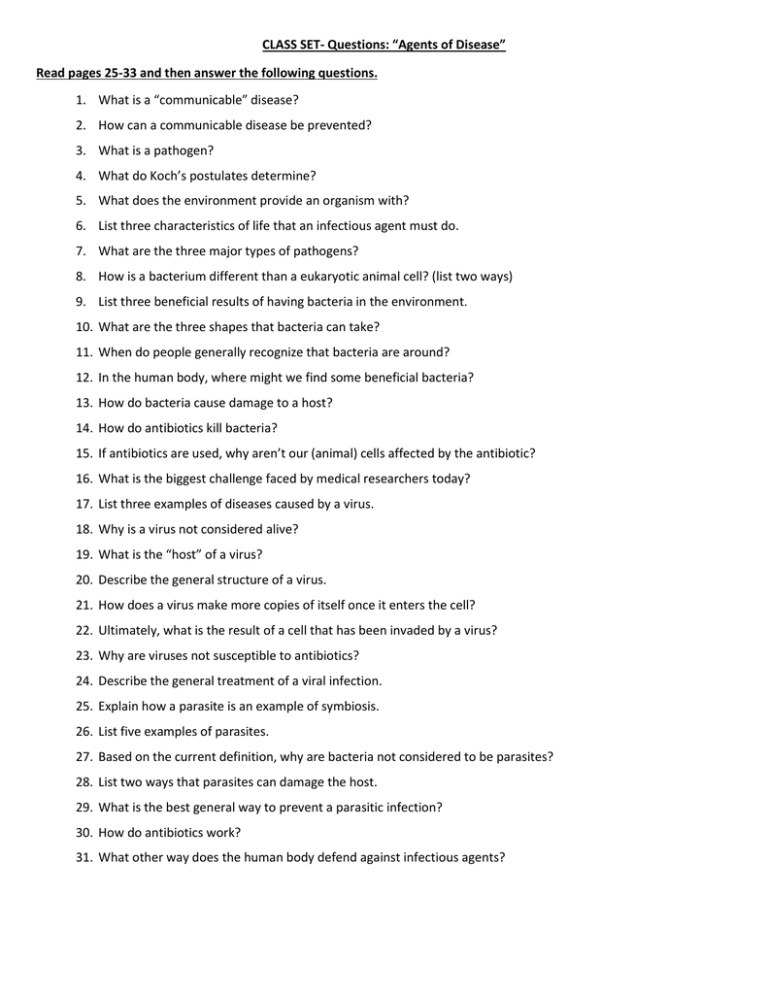
CLASS SET- Questions: “Agents of Disease” Read pages 25-33 and then answer the following questions. 1. What is a “communicable” disease? 2. How can a communicable disease be prevented? 3. What is a pathogen? 4. What do Koch’s postulates determine? 5. What does the environment provide an organism with? 6. List three characteristics of life that an infectious agent must do. 7. What are the three major types of pathogens? 8. How is a bacterium different than a eukaryotic animal cell? (list two ways) 9. List three beneficial results of having bacteria in the environment. 10. What are the three shapes that bacteria can take? 11. When do people generally recognize that bacteria are around? 12. In the human body, where might we find some beneficial bacteria? 13. How do bacteria cause damage to a host? 14. How do antibiotics kill bacteria? 15. If antibiotics are used, why aren’t our (animal) cells affected by the antibiotic? 16. What is the biggest challenge faced by medical researchers today? 17. List three examples of diseases caused by a virus. 18. Why is a virus not considered alive? 19. What is the “host” of a virus? 20. Describe the general structure of a virus. 21. How does a virus make more copies of itself once it enters the cell? 22. Ultimately, what is the result of a cell that has been invaded by a virus? 23. Why are viruses not susceptible to antibiotics? 24. Describe the general treatment of a viral infection. 25. Explain how a parasite is an example of symbiosis. 26. List five examples of parasites. 27. Based on the current definition, why are bacteria not considered to be parasites? 28. List two ways that parasites can damage the host. 29. What is the best general way to prevent a parasitic infection? 30. How do antibiotics work? 31. What other way does the human body defend against infectious agents?


